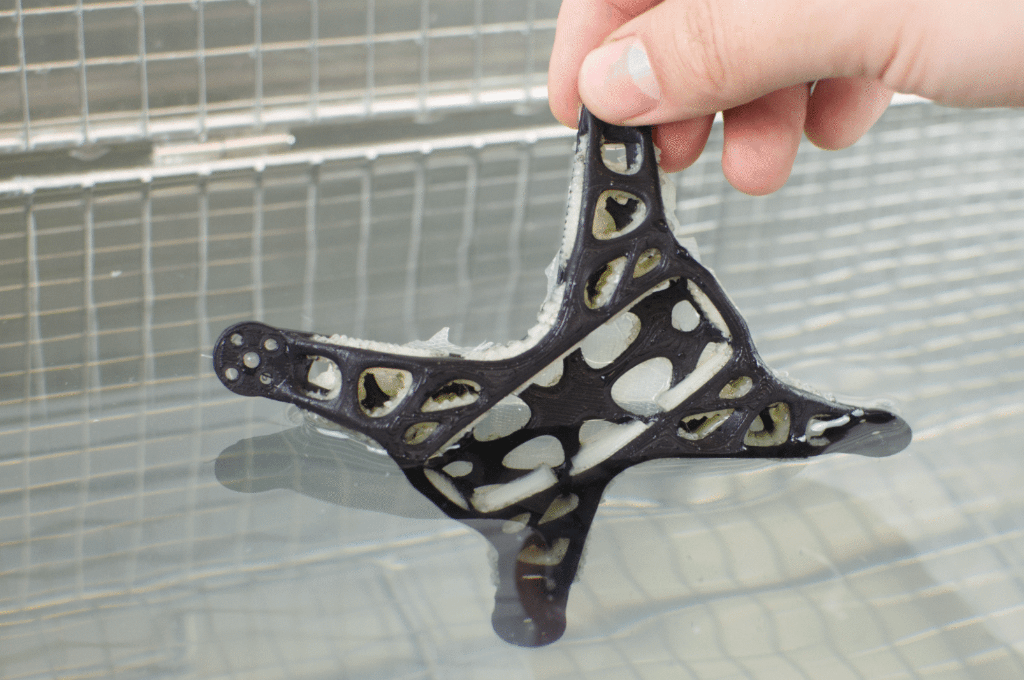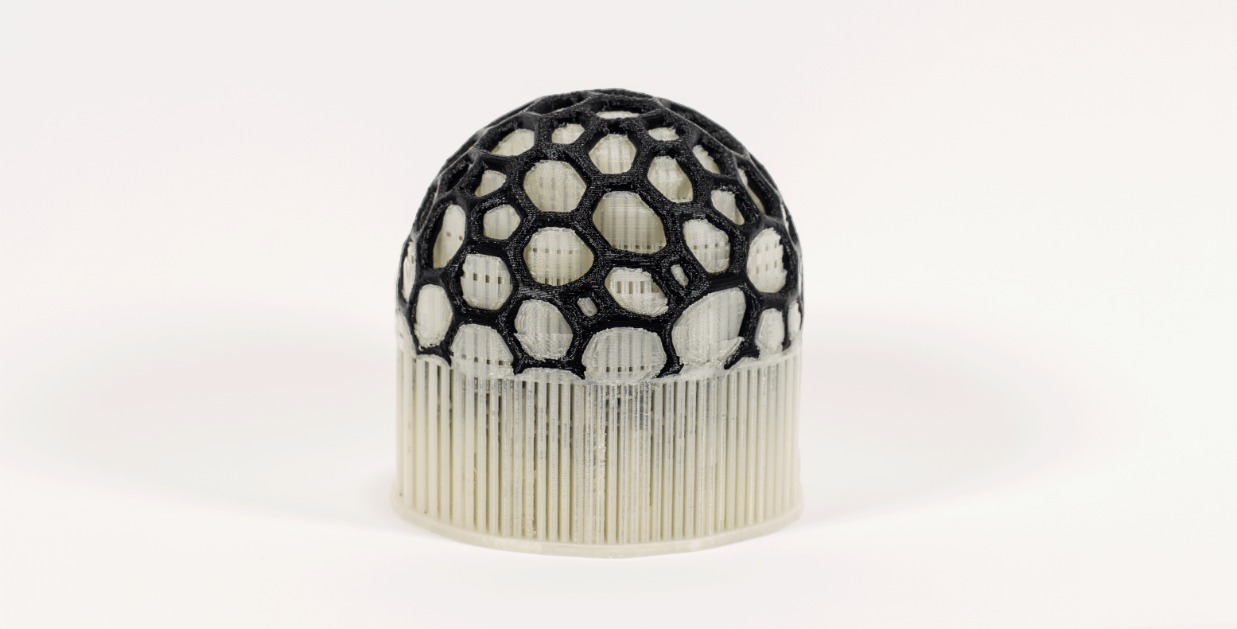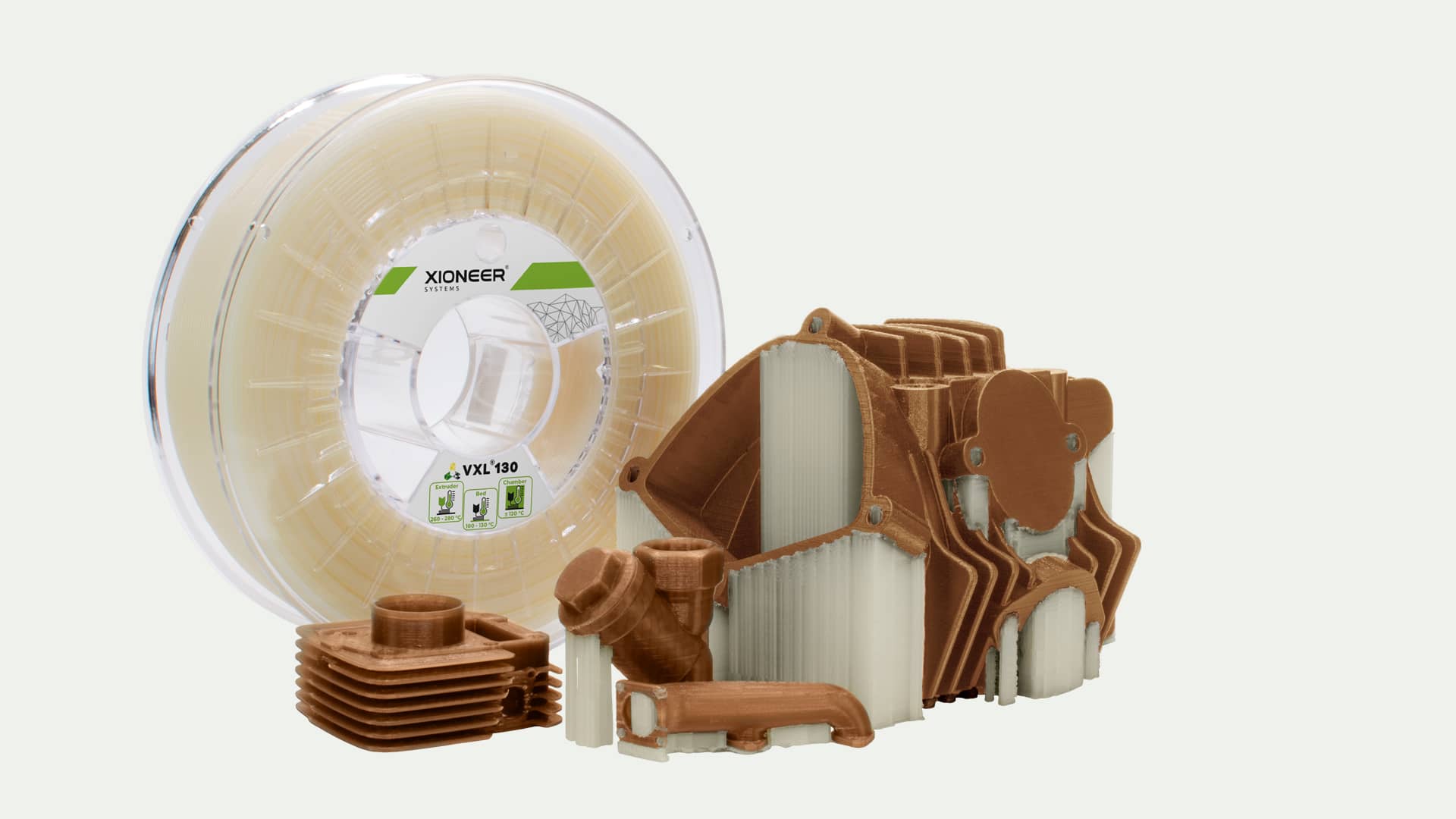3D printed support structures make the most complicated geometries blissfully easy. Whether you use break-away or soluble structures, these must be removed afterward. The best way to do that is: quickly. Today I’ll show you 5 effective and affordable solutions to remove your soluble support materials (SSM). So, let’s get started!
Here are the three key elements to keep in mind when removing soluble support materials from your 3d printed objects: Solvent (The liquid where you dissolve supports), Solvent Temperature, and Solvent Agitation.
When these three things are right, removing your support structure becomes really easy. Your process is slick and your end results are precise and clean. I’ve been fortunate enough to test many products with homemade experiments to remove SSM. The wisdom that I’m sharing has been gained by spending many hours conducting detailed research, with some mishaps along the way!
I summarize the best techniques for you (and me) here.
A-B-C Factors For Effective Dissolution of Supports
Let’s briefly look at what actually matters when you want to dissolve SSMs effectively:
A. Solvent:
Your liquid must match your support material. You may choose water, orange oil, or a mildly alkaline solution. It really depends on your choice of the soluble support material. Some prefer to use water because it’s easily available and simple (I mean, it’s just water). However, water-soluble supports such as PVA have a few nasty properties that can turn the life of a 3d printer user into a nightmare. These materials can easily clog your nozzle and are difficult to store because they absorb humidity from the surrounding air. So if you’re not sure, this article helps you choose.
But where should you put your liquid?
The size of the tank determines how many parts (or how big the parts) you can dissolve at once. So you might want to take into account the maximum part sizes you typically 3D print. Then we suggest buying at least one size larger than your minimum desired project size.
Your tank also plays a role in the amount of SSM you can dissolve at one time. Over time, the liquid will get saturated and will lose its ability to dissolve more support material. So again, it makes sense to leave some space in your tank for more solvent.
B. Temperature:
There’s nothing worse than being in the shower and someone turns the cold tap off on. Scolding yourself is no fun at all!
Your plastic 3D printed parts may feel much the same way if your solvent temperature is too high. The truth is: every plastic has its own heat resistance. Some exotic thermoplastic materials like PEEK can withstand temperatures beyond 300 degrees C. But most common plastic materials settle in the range around 100 degrees C.
ABS will deform if you heat it beyond 90 degrees C. PETG withstands only up to 60 degrees C. I have already ruined many 3D prints from PETG because I wanted to speed up the dissolution time and came too close to the deforming point in my solvent tank. Although higher temperature typically increases the dissolution process (think: sugar dissolves faster in hot tea than in cold water) – it may also ruin your precious models.
So help your models feel comfortable while dissolving in the bath. The key to this is to invest in the right temperature control that can keep the temperature high enough to dissolve your supports, but low enough not to damage your parts. A professional support removal station like the Vortex EZ can help you achieve this without much headache.
C. Agitation:
“Move. Move! Move!!” Hearing this from our high school gym coach may have been very annoying. But moving fast is essential for quickly dissolving our support materials.
Strong solvent agitation around support structures increases dissolution. The faster you stir your cup of tea, the faster the sugar will dissolve. Fresh liquid replaces the liquid near the support that has already been saturated.
There are several basic techniques to move fluids to help you dissolve your 3D printing supports: pumps, propellers, and ultrasonic. But they all have their own advantages and drawbacks.
But what are the solutions now? Well, let’s see what’s out there.
1. The Tank With a Pump
To provide enough agitation, the most common dissolving tanks use a pump. The pump will move the solvent in a closed circuit washing 3D printed parts. This continuous water movement helps the support materials to come off more quickly and easily.
Although fluid pumps have been around for over a hundred years, not every pump is suitable for dissolving supports. When supports dissolve, they will stay in the solvent – often as a slurry (think: PVA). That slurry can clog the pump. In the case of alkaline solvents, the components of the pump need to withstand the high pH levels of the solvent.
2. Ultrasonic Tanks
In ultrasonic tanks, powerful ultrasound is applied to the liquid to create microscopic bubbles. These bubbles remove the SSM more gently than flowing water. This can be useful for very small, delicate 3D printed parts.
However, one disadvantage of ultrasonic tanks that should not be underestimated is their high noise level. While you won’t hear the ultrasound itself, (assuming you’re not a bat), generating ultrasound frequencies also produces sounds at low hearable levels as a side-effect. And this can get very loud and annoying. If you don’t have a soundproof room for your tank, then we tend to advise against this technique.
3. Flow Jet Tanks
Regardless of whether you use simple tanks with water flow or ultrasonic tanks… You should be willing to wait. The dissolving process takes time. Smaller open parts will dissolve in less than an hour, but large complex parts with many cavities may take several hours to dissolve.
This brings us to the industrial (and very expensive) SSM removal solutions. So if you have enough budget (and room in your office), there are some high-end devices available on the market.
These machines usually work similarly to a dishwasher. Multiple water jets process your 3D part from different directions with low pressure. Your support structures thus typically come off faster than in simple tanks with moving water.
4. Affordable and Effective: New Devices
Not everyone has infinite space and budget at their disposal. However, waiting for eons for your support structures to finally dissolve is also soul-destroying and costly.
After our hardware experts got together with the team of BellandTechnology (the developers of VXL support material), we couldn’t find any affordable yet effective support removal station. So we decided to develop our own. And the result was a product we coined Vortex EZ.
Vortex EZ consists of a large double-walled stainless steel tank that can accommodate large parts up to 465 x 275 x 210 mm in size. The powerful heater can heat up to 36 Liters of solvent from room temperature to 70 degrees C in about an hour. The built-in temperature regulator will keep the temperature stable, while the double-walled tank will prevent the heat from easily escaping (or burning you).
Vortex EZ also has a powerful propeller that generates a real tornado inside the tank. But don’t worry, the propeller is powered by a silent motor – so you will hardly hear it working.
After working with soluble materials for several years, we also included some helpful tweaks to make working with Vortex EZ a joy. The tank has a removable stainless steel basket to easily take out your parts. The device also has a tap to drain used solvent. And my personal favorite feature: the lid has additional protection for your fingers against escaping steam. My team built this feature into the product after complaining to me that I never wear gloves when working with hot liquids.
Take a look at our product Vortex EZ here.
5. Do It Yourself
Do you prefer to have a bash at everything yourself? Very understandable, because that’s exactly why we all love 3D printing so much!
However, when it comes to dissolving support materials, there are few things to consider when building your own support removal device. But basically, such devices are inexpensive and not too complex to build yourself. You will need a few things, which you can get at your next hardware store:
1. Heat-resistant waterproof tank (large enough for your models).
On the budget side, an HDPE or a PP tank should do the job for low temperatures. But for higher temperatures, we advise using a stainless steel tank. Some users also reported even using an aquarium (but beware that the silicon between the glass plates will get brittle with time when exposed to heat).
2. Heater with a temperature regulator
We already know that the liquid in your tank must be kept stable and as precisely balanced as possible at a certain temperature (think: deformation of models when they get too hot). So make sure you get a heater with a temperature regulator.
3. Pump
Many users reported success dissolving SSMs with a simple and inexpensive aquarium pump. You can get one under 10 bucks. But keep in mind, that these pumps have a limited lifetime once they get in contact with solvents and dissolved plastic slurry.
In our VXL-Go starter kit, we use something unconventional as a pump: a Sous-Vide stick. You may have heard of it when watching a late-night cooking channel. It’s a kitchen device for slowly preparing delicious steaks and veggies. The key advantages for using a Sous-Vide stick for dissolving supports: the stick heats and agitates the liquid simultaneously. So because it’s a 2-in-1 device, you don’t need an additional heater.
4. Siphon Pump For Draining
After a few dissolution cycles, your solvent will get saturated and will not be able to dissolve any more supports. So you also need to replace the fluid regularly.
This is when a siphon pump can come in very handy. It uses a small bellow and the height difference between your tank and the sink to drain your entire tank in minutes. The thing costs only a few bucks on Amazon.
When draining solvents, please consider your safety: the liquid can be hot.
5. Accessories
These come in handy when handling your support removal station. You may want to invest in a pair of thongs, some gloves, and eye protection.
Finally, if you don’t want to scavenge your hardware store for all items above, you can have a look at our VXL-Go starter kit. We have included all of the above items to get you started dissolving supports. We even threw in a sample spool of our VXL support material.
Last But Not Least: Think Safety First
I mentioned it above, but I want to reiterate it here: No matter what solution you use, always make sure you’re safe. Wear safety glasses with the appropriate heat resistance and wear gloves. Much safer still, however, are tanks with a closed circuit. You don’t have to open them in between operations, reducing your exposure to hot liquids.
We wish you happy printing and dissolving.
If you have any questions, drop us an email.




